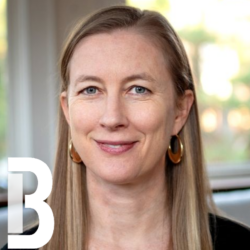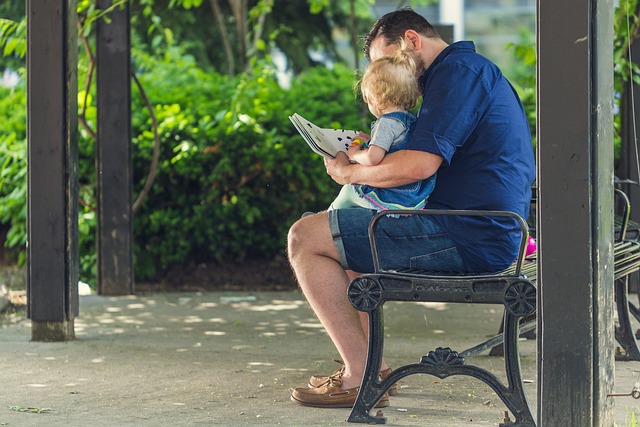 PIBBS
PIBBS Simple But Powerful Solutions to Education’s Thorniest Problems

(Photo: “ Michael Anderson/National Cancer Institute, Licensed under Public Domain via Commons.)
The problems of education can seem intractable. Take for example the achievement gap between white and Asian-American students and their African-American and Latino peers, a long-standing disparity that has many root causes and requires multiple solutions. But little things can make a big difference, according to psychologists Geoffrey Cohen and Julio Garcia.
In an article for the debut edition of Policy Insights from the Behavioral and Brain Sciences, Cohen and Garcia show how brief educational interventions that draw on social psychology can have a big impact, because students’ thoughts and feelings about school affect their experiences of it. Without spending much money or even much time, educators can shift students’ mindsets to make real differences in the achievement gap and other educational problems.
Many teachers, policymakers, and even students themselves fall prey to what psychologists call the fundamental attribution error: assuming that a person’s behavior is determined entirely by internal attributes and discounting the role of the situation. In education, school context plays a big part in how students experience learning – and in their success or failure. Studies show that students can experience the same classroom very differently. One reason is that teachers often subconsciously treat students differently. For example, a classic study shows that when teachers were led to believe that random students were “intellectual bloomers” with unusual academic potential, they performed better than their peers.
It’s not hard to imagine how stereotypes about white and African-American students could lead to a similar, albeit subconscious, pattern. And Cohen and Garcia cite research showing that teachers provide less critical and constructive feedback to African-American and Latino students than white students.

The Federation of Associations in Behavioral and Brain Sciences, or FABBS, with SAGE, the parent of Social Science Space, publishes the journal Policy Insights from the Behavioral and Brain Sciences. This annual journal features research findings in the sciences of mind, brain, and behavior that are applicable to nearly every area of public policy. The first issue comprises 33 articles in social and personality psychology focused on topics including health, education, justice, the environment, and inequality.
Even when teachers do treat students equally, students sometimes perceive the teacher or the classroom differently based on their previous experiences and backgrounds. A large body of research has documented a phenomenon known as stereotype threat. When minority students feel at risk of confirming a negative stereotype about their cultural or racial group, that threat and the anxiety and hopelessness that come with it ironically lead them to perform more poorly.
The good news is that understanding students’ mindsets allows psychologists to design interventions to overcome issues like stereotype threat. Cohen and Garcia cite many such interventions that have been tested in randomized controlled trials, the gold standard of research rigor. One study found that when teachers provided detailed critical feedback about an essay along with a personal note expressing their belief in the students’ ability to improve, 64 percent of African American students chose to revise their essay as compared to 24 percent of their peers in the control group.
At the other end of the educational spectrum, Cohen and his colleagues designed a simple intervention to help African-American students in the transition to college. They wanted to increase students’ sense of belonging, because those who feel they don’t belong are more likely to struggle with coursework, fail to ask for help, and drop out. Experimental group students heard testimonials from seniors explaining that all students struggle at some point in college, regardless of gender or race. Four years later, African Americans who had attended the one-time event had a higher three year cumulative grade point average, reported higher levels of general well-being, and closed the achievement gap with their white peers by approximately 50 percent.
These interventions were simple and cost almost nothing, yet they had a powerful impact on student motivation and behavior. The key to making such interventions work is timing, Cohen and Garcia write. Their review suggests that interventions are more effective when they come shortly before a threat, for example right before a big test or a vulnerable transition. In a series of studies designed to reduce stereotype threat in the transition to seventh grade, Cohen and colleagues found that the intervention was more effective when it was conducted two weeks into the school year rather than 4 weeks. Cohen and Garcia speculate that it’s important to boost one’s sense of self before the threat of the transition can take over.
Social psychological interventions are not “wonder drugs,” the researchers caution. Rather, they are catalysts that trigger chain reactions, for example by leading students to enroll in advanced classes. Whether in K-12 or higher education, students still need strong instruction, supportive teachers, and adequate resources, but they are more likely to take advantage of those opportunities when they have conducive mindsets. As Cohen and Garcia put it, a well-designed intervention “can act like a new lens that provides a new perspective from which to see the world” – ideally a perspective that views educational success as possible for everyone.


























































































Education has many problems, but the desire to solve those problems is not one. But because we can not cover many problems in one story, we will focus just problems, now we need the solution, Quick Dissertation Help provide good solution for easily learning.